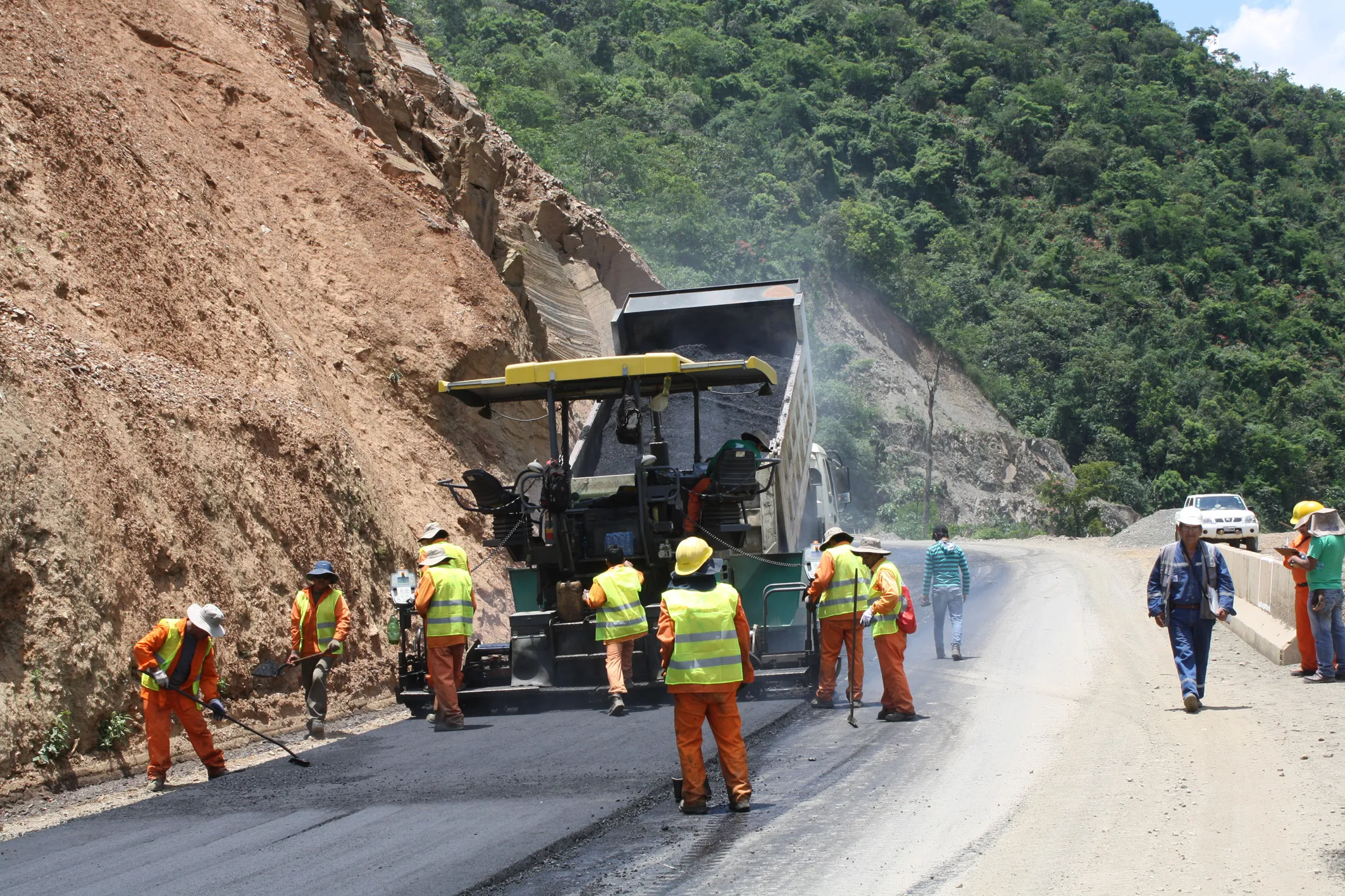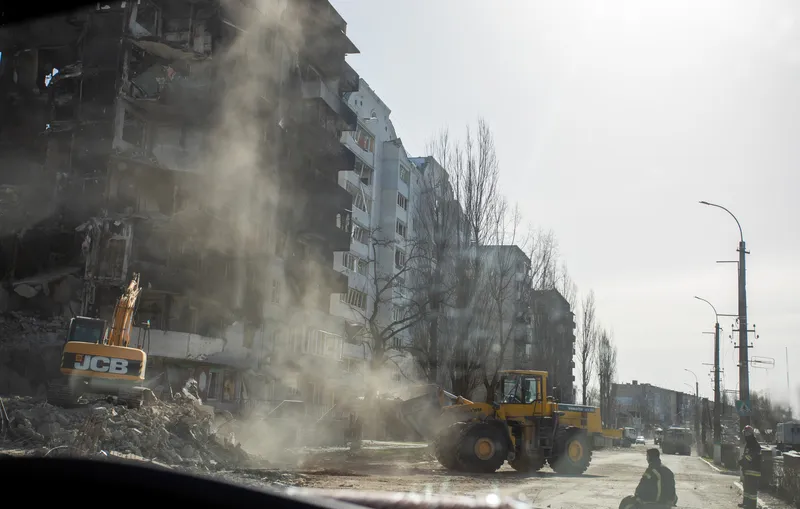Maryvonne Plessis-Fraissard highlights that the key importance of rural roads in the context of global development is only now being fully recognised, is not receiving enough attention and is facing vital new challenges
February 10, 2012
Read time: 7 mins

Maryvonne Plessis-Fraissard highlights that the key importance of rural roads in the context of global development is only now being fully recognised, is not receiving enough attention and is facing vital new challenges
Rural roads have only relatively recently received attention in development research. The International Bank for Reconstruction and Development, or World Bank, moved away from the World War II reconstruction mandate during the early 1960s to start, and address, the "Third World" development agenda. At that time, the development process was not understood beyond the need to build infrastructure. Development was pursued on a sector-by-sector basis, giving priority to the larger "structural" infrastructure. Rural roads were attended mostly as part of agricultural sector investment.
Understanding poverty
During the 1990s, rural roads became the centre of intensive and specific attention, in particular under the leadership of the International Forum for Rural Transport (IFRT), and through the studies of the Sub-Saharan Africa Transport Partnership (SSATP). This work documented the economic and social development impacts of rural roads as we know them today. Its significance extended beyond the issues of rural and agricultural development, and contributed to the unbundling of the concept of poverty, and the corresponding processes of social and economic integration.The need to focus on the mobility of individuals, the importance of transport services (and not just infrastructure), and the prevalence of non-motorised and alternative modes of transport were recognised. Importantly, the intra household dynamic by which isolation (measured in terms of distance to water, fuel and basic social services) perpetrates wide gender gaps and constitutes a poverty trap was established. Today, these concepts of access, services, participation and gender equality are at the centre of the development debate.
Rural roads are no longer a feature of agricultural policy; they have become a critical headline indicator of development monitoring.
"To be poor is to be isolated"
When, in 2000, over 40,000 poor women and men in 50 countries spoke about their lives and the meaning of poverty, they did not comment so much about lack of money. Rather, they denounced lack of security as well as uncertainty and isolation. Physical, social and political isolation are core features of the poverty trap. These testimonies called for a new focus in the fight against poverty, and the significant role of rural roads received new recognition.Rural access: a core poverty indicator
The Rural Access Index (RAI) measures the percentage of the rural population with "access" to the transport network. Adopted in 2004 as a headline Indicator of Development, it is included in household surveys in a growing number of countries.Today, one billion people, or 31% of the world's rural population, live isolated from markets and services: they live more than 2km from an "all season road" (one that is drivable at all times of the year and within, at most, six hours after rain) by the prevailing means of transport, which is usually a non-four-wheel drive pick-up truck.
Global poverty has been falling rapidly, and is becoming more and more an urban issue as the world urbanises. Still, isolated rural populations often overlap with the "bottom billion," those whose perspectives are not improving and who live in the small "failing states" (falling further and further behind the rest of the world's people).
Addressing rural poverty cost-effectively
Overall, many examples are found of the positive economic impacts of rural roads. For example, the number of kilometres of rural road per capita of population is the most significant explanation of growth and consumption in Southern China. Despite variability in returns, investments in rural roads are found to have greater economic impact than any other investment - before education, agriculture and health in India, Thailand, China, Ethiopia and Uganda.Improvement of rural roads also brings social development, firstly in the form of improved food security. In Morocco, the positive and multifaceted social multiplier effect of enhanced access to basic services has been documented. It shows how greater girls schooling has advanced gender equity; how reliable access to the city has improved the quality of education and health, with better enrolment and retention of teachers and medical personnel. Enhanced access has also impacted wellness, productivity and the environment by making butane more widely available for household use.
Improving governance, participation and citizenship
Better attention to rural roads and appropriate community participation has been shown to enhance the quality of citizenship in Peru.Rural roads facilitate access to district centres, polling stations and the centres of delivery for democratic services. By lowering the cost of participation, they have promoted involvement in local decision-making, thereby enabling greater scrutiny and awareness on the part of communities and, in turn, contributing to improved democratic services.
In other countries, such as Chad, addressing the isolation of villages has been associated with greater identification of communities with civil authorities and the rural roads have been called "roads of peace".
The 'step-child' of infrastructure
Rural roads often receive the least attention in the network. This is because they are funded from a number of sources, at national regional and local levels. Similarly, they are managed with inputs from central, regional and local governments, and are situated at the intersection of transport, agriculture and local government mandates. They are treated sometimes as economic, sometimes as social investments.They constitute a vast infrastructure asset, yet they are neither cheap nor cutting-edge. They are an infrastructure, not a service, and yet a major part of their cost is recurrent.
These complexities make it harder for rural roads interventions to achieve expected standards of governance and technical performance. S. Fan summarises the predicament of rural roads: "they are the step-child of infrastructure provision in developing countries".
How much rural roads?
Rural roads continue to be at the centre of controversies regarding appropriate technical standards and fair cost sharing arrangements.This is because internal rate of return methodologies often underestimate impacts and ignore distributional and poverty reduction effects; and budgets do not account well for long construction times and delayed evidence of benefits.
Rural roads also interact with other investments, making effects hard to isolate. While travel time to cities is associated with decreasing crop production, no model can set optimum investment effort. There is also little hard evidence on the contextual factors that make a programme succeed: high adult illiteracy may reduce the impact of improved rural roads, while difficult terrains often show the opposite effect. Almost everywhere, lack of data is a major handicap.
Simplified modelling methodologies requiring less information have been designed for low traffic volumes; cost reduction and practical approaches such as spot improvements have been developed to address scarcity of funds or low population and traffic densities, while focusing on the access and mobility issues that make the difference for the poor. These instruments remain underutilised, often because they are perceived as politically inappropriate.
New challenges
As nations achieve improved road safety, casualtiesMaryvonne Plessis-Fraissard consults on all aspects of Transport as it relates to safe, equitable and sustainable development. She sits on three Committees of the US Transport Research Board (TRB), and on the Management Board and Advisory Committee of a number of Transport Planning, Consulting and Research outfits and Conferences.She had a long career at the World Bank where she served, notably, as the Director for Transport and Urban Development, and had operational responsibilities spanning over 50 countries. remain high on low-volume and isolated roads. This has resulted in redistribution of road upgrading and safety funding in favour of secondary and rural roads in a number of OECD [Organisation for Economic Cooperation and Development] countries.
The risks associated with climate change, with new temperature and rain patterns and extreme weather events, also call for updated construction and maintenance standards.
Rural roads are the wealth of nations, a tool for social inclusion, economic development and environmental sustainability. If rural access is an indicator of poverty, then rural roads management may be a measure of governance.









